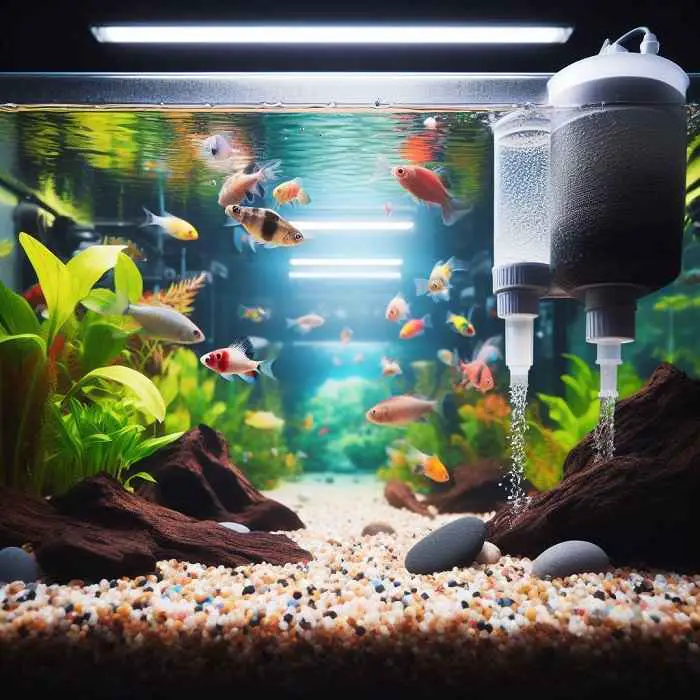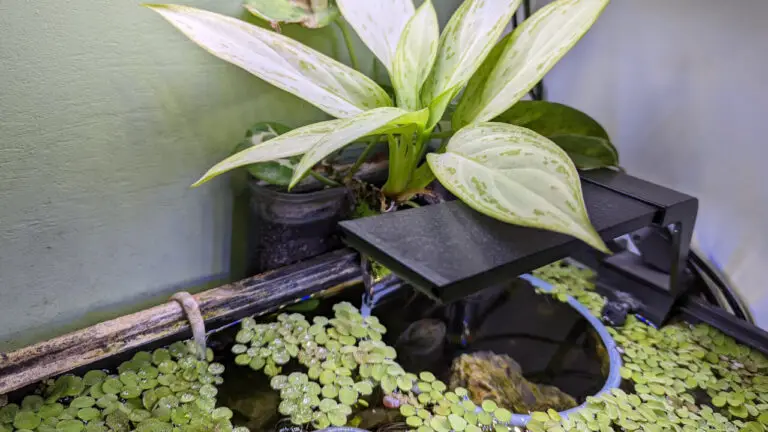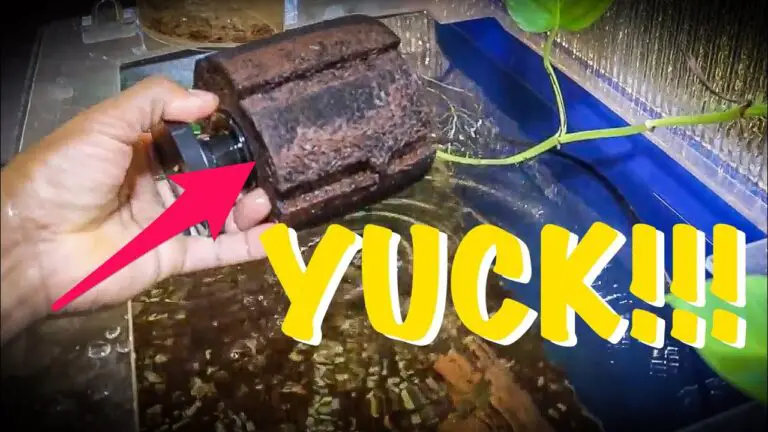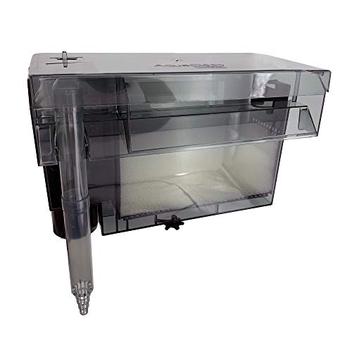What Type of Water Do Goldfish Need?
Goldfish need clean, oxygenated water to stay healthy and happy. The ideal pH for goldfish is between 7.0 and 8.4 and the temperature should be around 70-75°F (21-24°C). Goldfish are tolerant of a wide range of water parameters, but sudden changes can stress them out or even kill them so it’s important to keep things stable in their tank environment.
When changing water, use dechlorinated tap water that has been allowed to sit overnight so chlorine can dissipate before you add it to the tank. Regular partial water changes will help keep your goldfish healthy as they produce waste which builds up in the aquarium over time and needs to be removed regularly through partial water changes using a gravel vacuum cleaner or siphon hose.
Why should you change your goldfish tank water?
Goldfish are one of the most popular pets and they require a specific type of water in order to thrive. Goldfish need clean, filtered, pH-balanced freshwater that is not too cold or warm. If you’re using tapwater for your goldfish tank, it’s important to dechlorinate it first as chlorine can be toxic to fish.
Additionally, adding an aquarium air pump will provide oxygenation and help keep their water clean by circulating particles away from the surface. With proper care and maintenance of their water environment, your goldfish should live a long and happy life!
How to Treat Tap Water for Goldfish
If you are looking to treat tap water for your goldfish, it’s important to first remove any chlorine or chloramines from the water. This can be done by using a dechlorinator, which is available at most pet stores. Additionally, you will want to add aquarium salt and adjust the pH levels of the water if necessary.
Finally, make sure that the temperature of your tap water matches that of your aquarium before introducing it into your tank!
Is Distilled Water Good for Goldfish
Distilled water is not recommended for goldfish, as it lacks the minerals and trace elements that they need to stay healthy. Goldfish should be kept in a tank with water that has been treated with an aquarium-safe conditioner and tested regularly to ensure proper pH levels are maintained. Adding aquarium salt can also help maintain a healthy balance of minerals in the water, making it more suitable for goldfish.
Can You Use Bottled Water for Goldfish
Yes, you can use bottled water for goldfish. It is important to note that if you are using bottled water, it should be free of chlorine and other chemicals present in tap water. Additionally, the pH level of the bottled water needs to match the ideal range for goldfish (6.0-8.0) or else it could cause health problems for your fish.
To ensure safety and optimal conditions for your goldfish, make sure to double check the label on any bottled water before adding it to their tank.
How Long Can Goldfish Survive in Tap Water
Goldfish can survive in tap water, although they are generally happiest and healthiest in aquariums with filtered water. Tap water should be treated with a dechlorinator before adding fish to the tank to remove any chlorine or other chemicals that could harm them. Goldfish can live up to 10 years when given proper care and a safe environment, so if you plan on keeping your goldfish in tap water, make sure it is properly treated and monitored regularly for signs of ammonia buildup or other issues.
Can I Use Spring Water for Goldfish
Yes, you can use spring water for goldfish. Spring water is a good choice for goldfish tanks because it contains natural minerals that can help keep the pH levels of your tank stable. Additionally, many sources of spring water are free from chlorine and other chemicals which is beneficial to fish health.
It’s important to note however that if using spring water, it should be tested before adding it to an existing aquarium in order to ensure the correct pH and mineral balance for your fish.
Can You Boil Tap Water for Goldfish
Yes, you can boil tap water for goldfish. This is a great way to make sure that your fish are getting clean and safe water. Boiling will remove any impurities or chemicals from the tap water, making it safe for your goldfish to drink and swim in.
Moreover, boiling helps kill off any bacteria or parasites that may be present in the tap water before adding it to your aquarium.
What Do Goldfish Like in Their Tank
Goldfish prefer a tank with ample space for swimming, and plenty of hiding spots to explore. A well-balanced diet is important, so make sure to feed your goldfish high quality fish food or pellets that are specifically designed for their needs. Additionally, the water should be clean and between 68°F – 74°F (20°C – 23°C).
Lastly, they like live plants in their tank as they provide oxygenation and natural filtration.
Goldfish Water Conditioner
Goldfish Water Conditioner is a great product for any goldfish owner. It helps to reduce levels of chlorine, chloramines and ammonia in the tank, making it safer and healthier for your fish. The conditioner also helps to neutralize heavy metals like copper and zinc that can be harmful to fish if left unchecked.
This product will help keep your tank clean and clear while keeping your fish healthy.
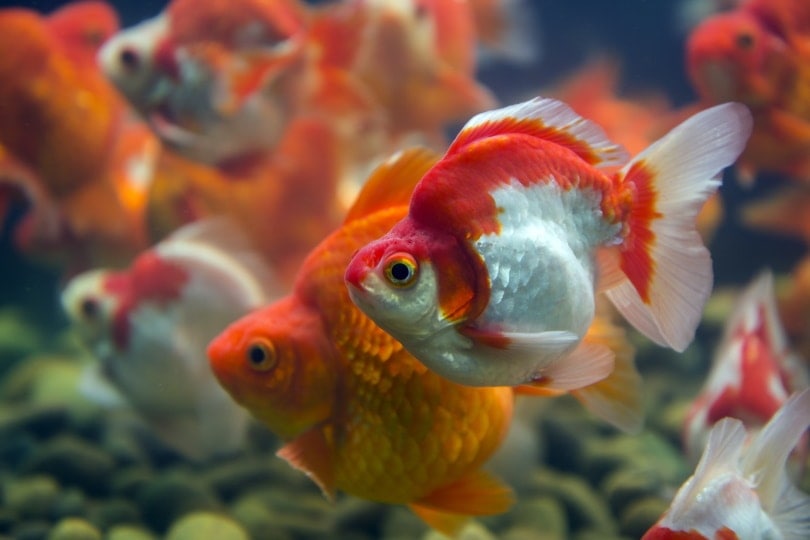
Credit: www.hepper.com
What Kind of Water Do You Use for Goldfish?
When it comes to choosing the right kind of water for goldfish, it is important to understand that not any type of water will do. Goldfish require highly oxygenated and filtered water in order to remain healthy and happy. Tap water may contain chlorine, chloramines, or heavy metals which can be toxic for your fish; therefore it should be avoided if possible.
The best option when it comes to providing the ideal environment for a goldfish is using a de-chlorinator with reverse osmosis (RO) purified water or aged tapwater that has been aerated overnight. De-chlorinators remove harmful chemicals from the water while RO filtration systems eliminate sediment particles and minerals such as magnesium, calcium and iron which can cause cloudy or discolored aquariums. Both these methods provide clean, safe and clear tank conditions necessary for your pet’s health.
Additionally, you should also use an aquarium thermometer when setting up your new tank so that you are able to gauge temperature levels accurately according to species requirements – most goldfish prefer temperatures ranging between 72°F – 78°F (22°C – 26°C). Lastly, remember always keep an eye on pH levels and test them regularly just in case they begin changing over time due to environmental factors like fish waste accumulation etc., as this could potentially lead to fatal consequences unless resolved quickly by adjusting alkalinity accordingly through additives available at all local pet stores!
Can I Use Bottled Water for Goldfish?
Using bottled water for goldfish can be a great way to keep your fish healthy and happy. Bottled water is often free of impurities that are commonly found in tap water, such as chlorine and other chemicals, which can potentially harm the delicate balance of your aquarium. While most brands of bottled drinking water will do just fine for goldfish, it’s always best to double check with the label first to make sure that there are no added minerals or salts present.
Minerals and salts can cause pH levels in an aquarium to become too high or low, leading to health problems for the fish. If you opt for distilled water instead, make sure you add an electrolyte supplement so that your goldfish don’t suffer from a lack essential nutrients like sodium and magnesium. Finally, when introducing new bottles of water into an established tank environment it’s important not to shock any beneficial bacteria living in the filter by changing out all the old water at once; instead perform small partial-water changes regularly over time until all of the old bottle has been replaced with new one.
Can Goldfish Live in Tap Water?
Yes, goldfish can live in tap water, as long as it is properly treated and maintained. Tap water contains chlorine, which can be toxic to fish if not removed. You can do this by using a dechlorinator product or by leaving the tap water out overnight so that the chlorine evaporates naturally.
Additionally, you should test your tap water for other chemicals such as nitrates and ammonia before adding it to your tank. Regular partial water changes using fresh-treated tapwater are also important for maintaining healthy levels of minerals and beneficial bacteria in the tank. Lastly, make sure that there are no contaminants such as lead or copper coming from your pipes into the aquarium; these metals are poisonous to fish!
With proper care and maintenance of your freshwater tank with treated tapwater, goldfish will thrive in their new environment!
Do Goldfish Need Saltwater Or Freshwater?
Goldfish are a popular choice for aquariums and ponds, but it’s important to know that goldfish need special care. When it comes to water, one of the most important questions is whether goldfish should live in saltwater or freshwater. The answer depends on the type of goldfish you have.
Most common varieties like comet, shubunkin and fantail can live in either freshwater or saltwater with no problems. But if you have more delicate species such as veiltails or ranchus, they should only be kept in freshwater tanks so that their fins don’t get damaged by the salinity levels found in saltwater tanks. Additionally, keep an eye out for changes in your fish’s behavior when switching between saline and fresh water environments; some types may not do well with drastic changes in pH levels or temperature fluctuations associated with changing from one environment to another.
Finally, make sure to use a good quality filtration system regardless of which type of tank you choose; both fresh and salty waters require effective filtration to ensure healthy living conditions for your pet fish!
Conclusion
In conclusion, it is important to consider the type of water goldfish need in order to thrive. Goldfish require a pH of 7-8 and a temperature between 65-75°F. Moreover, they benefit from having their water regularly changed as this helps keep their environment clean and free of toxins or pollutants that can harm them.
By providing your goldfish with the right kind of water and staying vigilant about keeping tank level balanced, you’ll ensure that your fish will stay healthy for years to come.

